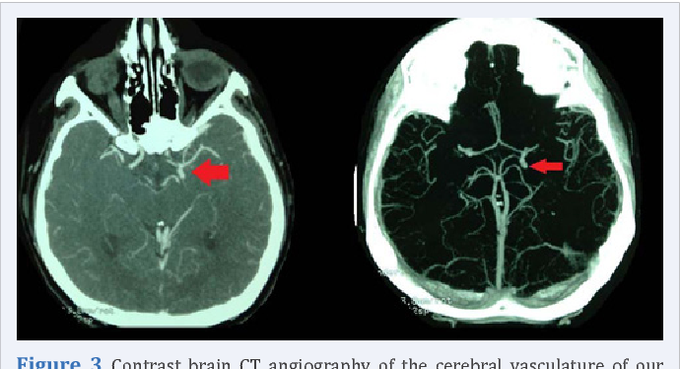

Abeer Fatimaabout 4 years ago

Berry Aneurysm AKA Saccular Cerebral Aneurysm
Berry aneurysm refers to dilated portion of blood vessel in Circle of Willis. It is an intracranial aneurysm. Berry aneurysm is the most common cause of subarachnoid hemorrhage. The attached image demonstrates the berry aneurysm on CT angiogram. Reference: https://radiopaedia.org/articles/saccular-cerebral-aneurysm Image via: https://www.semanticscholar.org/paper/Intracranial-Congenital-Berry%27s-Aneurysm%2C-Recurrent-Amin-Shukir/151d38d46608c10802cb33f540d216386f0fa16c/figure/2
Other commentsSign in to post comments. You don't have an account? Sign up now!
Related posts
herniation secondary to raised ICPHyperekplexiaSymptoms of HyperekplexiaDandy Walker Malformation | Diagnosis symptoms and treatment2-Minute Neuroscience: Brain AneurysmsSeizures (Epilepsy) Nursing NCLEX: Tonic-Clonic, Generalized, Focal, SymptomsStroke: Causes, Risk Factors, Treatment, and Prevention | Mass General BrighamNeurofibromatosisAbsence seizuresSymptoms of absence seizures

